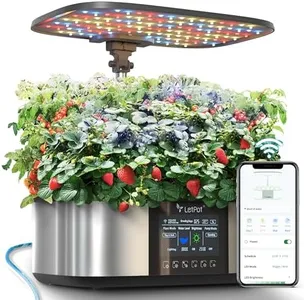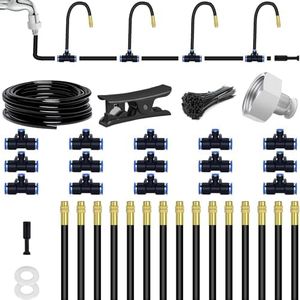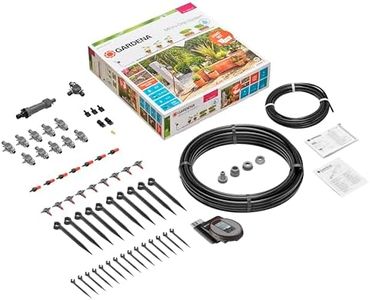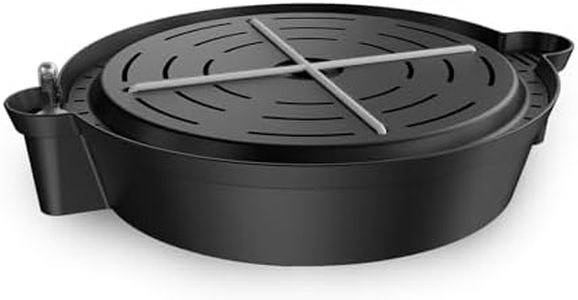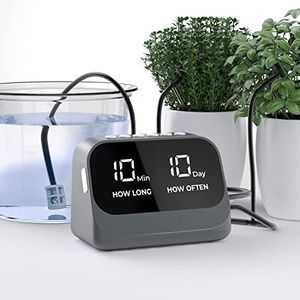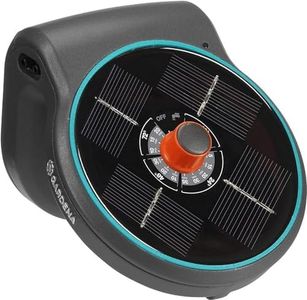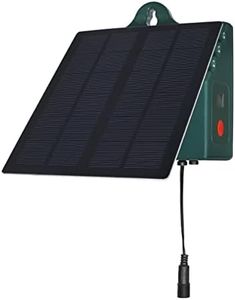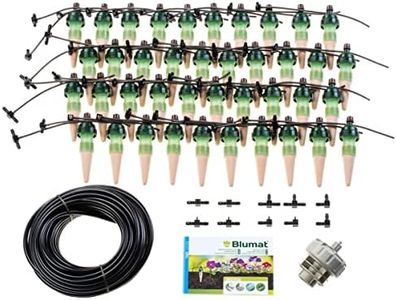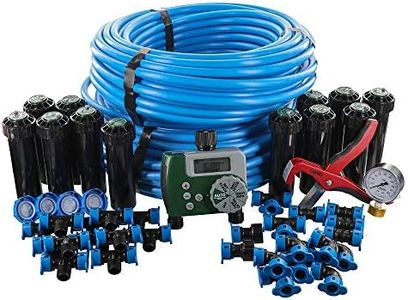We Use CookiesWe use cookies to enhance the security, performance,
functionality and for analytical and promotional activities. By continuing to browse this site you
are agreeing to our privacy policy
10 Best Self Watering Systems
From leading brands and best sellers available on the web.Buying Guide for the Best Self Watering Systems
Choosing a self-watering system is a smart way to make plant care much easier, especially if you travel often, are busy, or just want a little more convenience. The trick to picking the right one is to understand your plants' needs, how much time you want to spend maintaining the system, and where you plan to use it—whether it's for indoor houseplants, outdoor gardens, or balcony projects. Each setup is a bit different, and looking at key features can help you get the best match for your plants and your routine. Focus on how many plants you have, the type of plants, and how automated you want the care to be.Water Reservoir CapacityWater reservoir capacity refers to how much water the system can hold at once. This is important because it determines how long the system can water your plants without you needing to refill it. Small reservoirs (under 1 liter) are good for single small pots or if you’re able to refill often, while medium (1-5 liters) will suit a few indoor plants or a medium-sized container. Large reservoirs (over 5 liters) are great for larger collections, big pots, or outdoor setups where you might want to fill the reservoir only once a week or less. Your needs depend on how many plants you have and how often you want to refill the system; more plants or less frequent attention points to a bigger reservoir.
Type of Water Delivery SystemThe type of water delivery system refers to how the water gets from the reservoir to your plants. Common methods include wick systems, drip emitters, and capillary mats. Wick systems are simple and low-maintenance, using a string to draw water to the roots—good for small pots and beginners. Drip systems can water multiple plants more evenly and give you better control, making them ideal for more complex or larger setups. Capillary mats sit under pots and transfer water as needed, working best for trays of small plants. Choose a method based on the number and size of your plants, and on how hands-on or hands-off you want to be.
Adjustability and ControlsAdjustability and controls refer to your ability to set how much water each plant gets and when. Some self-watering systems offer simple manual valves, while others come with timers or electronic sensors. For low-maintenance plants or those that like to dry out a bit, less frequent watering with basic control might be fine. For more sensitive or high-need plants, or if you want maximum convenience, look for systems with more adjustability. Consider what type of plants you have and how different their watering needs are; if you’re combining different plant types in one system, having adjustable settings is important.
Installation and MaintenanceInstallation and maintenance address how easy it is to set up and keep the system working. Some systems are plug-and-play and require no tools, making them perfect for beginners or those who don’t want a lot of hassle. Others might need some assembly, more regular cleaning of tubes or filters, or changing wicks. If you have a busy schedule or want a system you can forget about, opt for one that is mostly self-cleaning or easily taken apart. Think about how much time you want to spend on setup and care, and match that to the product’s requirements.
Compatibility with Plant Types and LocationsCompatibility refers to whether the self-watering system fits well with the kinds of plants you own and where you keep them. Some systems work best with small indoor pots, while others are designed for outdoor planters or raised beds. Large, thirsty plants (like tomatoes or tropicals) may need systems that deliver more water, while succulents and cacti need less. Make sure the system you choose matches your plants’ needs as well as the amount of sunlight and air flow in your space, to avoid under- or over-watering.
